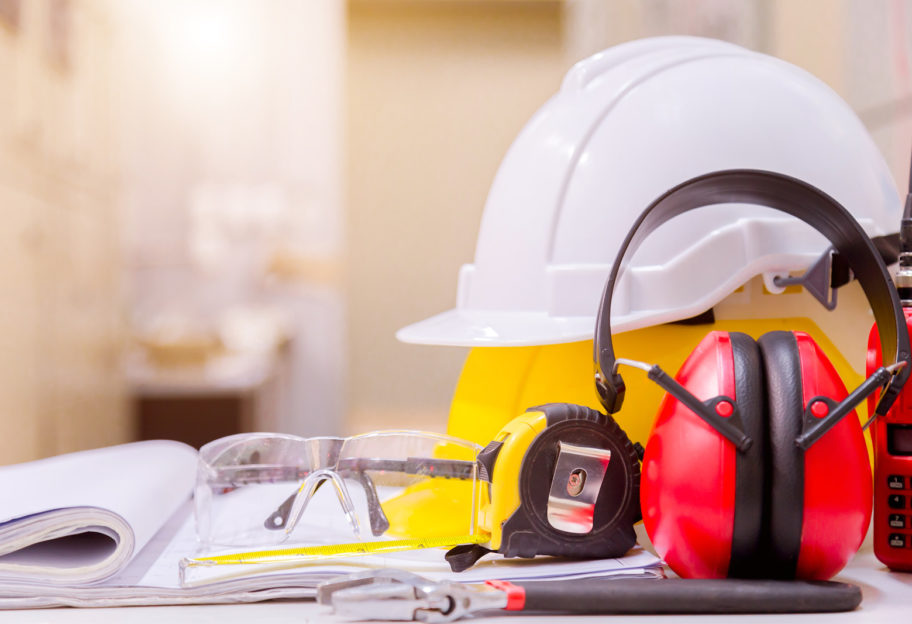The renovator’s How To Guide to site establishment
Learn Cherie Barber’s personal guide on how to professional establish your renovation site.
In this video you’ll learn:
- The steps on how to set up and provide a safe work site
- How to identify the Principal Contractor and what their role should entail
- When to turn off your water supply and whether to your whole house, or just 1 room at 1 time.
- Who to contact for your plans
- What to do with a Material Safety Data Sheet
TRANSCRIPTION
[00:00:09] Renovating old properties is a great way to add value to a property or earn an income. But before you bring any trades on site or start those tools you need to by law, set up the site to make it a safe working environment for everybody that comes on your site. That process is called site establishment and this video is going to show you how you can do that yourself. In construction terms site establishment is the process of assessing and setting up a building site with all the correct health and safety measures in place. It’s about creating a safe working environment for everyone involved in your renovation project. It also keeps your property secure throughout your renovation process minimising the chance of theft vandalism or unauthorised people simply wandering onto your site potentially exposing themselves to risk or injury. There are hundreds of injuries each year on construction sites in Australia. So not surprisingly occupational health and safety is a major concern. There are strict rules governing what constitutes a safe secure environment for workers. Should any accident happen on your site you want to be able to demonstrate that all the necessary precautions and procedures were in place. Many aspects of site establishment are not just good sense, they are legal requirements. Should a Council Ranger a Work Cover Inspector need to visit your construction site for any reason you want to be sure that your legal duty of care has been met. Where unsure, it’s definitely advisable to air on the side of caution and be extra vigilant. By law the principal contractor has responsibility for a construction site. [00:01:58][109.5]
[00:01:59] A principal contractor is a person appointed by the owner of a project to be responsible for the overall safety of employers and employees, plant and equipment and members of the public who may be affected by the works associated with the construction of a project. If there is no principal contractor, the homeowner is responsible for site establishment. If you’re renovating under an owner builder permit then you are the principal contractor and site establishment is your responsibility, along with all the other defective builder roles you take on when you’re handed that owner builder permit. If you engaged a licensed builder then that person becomes the principal contractor and assumes the responsibility for site management. If you’re a home owner doing purely cosmetic renovations that require no formal council or certifier approval, maybe things like getting a new kitchen installed, floorboards polished, rendering or painting your house, you still have a duty of care to establish a safe workplace for your tradespeople. Site establishment for minor cosmetic renovation is therefore not required bye law. However is good building practice. If you’re doing a whole house cosmetic renovation you really should implement site establishment measures as your home could be deemed a construction site. Depending on the extent of works. Make sure you also check the licences and insurances of all your tradies you contract to do the work to make sure they have the necessary cover in place in case of an accident. It doesn’t matter if you’re renovating your own home or a big block of apartments site establishment is a critical part of the process. I’m now going to take you through all the individual components that you really need to think about. If during a whole house renovation like this, then the best thing to do is to get your sparkie to turn off all of the power in their house and isolated just to the electrical meter box. What you’ll do is you actually run power boards all your trades tools will run from this central point and that’s the safest way to manage your renovation. Next up is the isolation of the water and this is always done by a plumber. Now if you’re living in your house your plumber can isolate the water to just your bathroom so that you’ve got water flowing all throughout the rest of your house. But if you’re doing a whole house renovation like this, it’s best to isolate your water till the water mains and normally a water mains is located somewhere around the front of your property. All your Plumber does is come on site, they literally turn off the tap and it’s as easy as that. And don’t forget your gas your plummer will isolate that too. Imagine escavating with a blindfold if you haven’t established precisely where the underground pipes and cables on your site lie, that is exactly what you’re doing. Dial Before You Dig is a free national referral service, that provides information about the underground networks located on your site. You provide your location, they get in contact with the various asset owners who have cables and pipes running across your site. And then the plans are sent directly to you free by post or email. Any contractors working on your site will need to site these plans before commencing any excavation or digging. For anything deemed high risk construction work, a safe work method statement also known as the S.W.M.S. is required by law. [00:05:40][221.2]
[00:05:41] Among the tasks legally described as high risk construction are risk of a person falling more than two metres, demolition of an element of a structure that is load bearing or otherwise related to the integrity of the structure, a shaft or trench with an excavation depth of more than one point five metres, structural alterations or repairs that require temporary support to prevent collapse. If you have a builder it is his or her responsibility to ensure the necessary safe work method statements have been prepared.
Material Safety Data Sheet is a document that provides health and safety information about products substances or chemicals that are classified as hazardous substances or dangerous goods and MSDS provides information on the manufacture or importing supplier, the product, its name, ingredients and properties, how the product can affect your health and precautions for using or storing it safely. An MSDS is provided by the manufacturer or importer of these goods.
It is up to the principal contractor who is using or storing dangerous goods or hazardous materials on their site, to obtain an up to date MSDS for each of these products. If you’ve had to obtain counsel or certify approval for the cosmetic renovation the law requires you have the correct signage on your side. And there are hefty fines for non-compliance. You’ll be pleased to know that you’d get one large sign that fulfills all your safety assignment obligations by contacting renovating for profit directly. And once you’ve got your signs. Be careful how you secure them to your property. If you’ve got a temporary fence simply secure them with a cable tie, which is very hard to rip off. [00:07:31][110.1]
[00:07:32] If you don’t have a temporary fence, put them on the inside of one of your windows. When you get the green light from council or your certifier to proceed with your building work, one of the conditions will be that you made the necessary environmental controls, so you need to be vigilant about controlling any type of pollution runoff from your site. Keep a sturdy broom handy and regularly sweep up any soil, sediment, clay, mud, gravel and sand or dirt that could escape from your site. Stormwater also has to be contained. The most basic precaution is placing sandbags across the front of your property. In case of any emergency, workers need one central assembly point as part of your safety induction for the site. Workers need to be made aware of where the emergency evacuation assembly point is located and have a prominent list of all the necessary emergency phone numbers. Given the inherent risk and number of injuries that occur on construction sites, it’s imperative to have a well-equipped first aid kit. Scrapes, cuts and splinters are just some of the minor injuries you can expect to deal with on an almost daily basis. For that reason I tend to top mine up with extra bandaids, antiseptic and a decent set of tweezers. For more serious injuries, make sure your kit is well equipped to cheat major trauma and heavy bleeding. Every worker must be made aware of where the first aid kit is located and have ready access to it. They also need to know who the nominated health and safety representative on your site is. You can buy professional first aid kits online for between 150 and 200 dollars. [00:09:20][108.0]
[00:09:21] I keep mine chained to the fencing with the sign above clearly indicating its location. It’s a good idea to also have a fire extinguisher on site. The type, size and location of fire extinguishers on a building site, should be selected according to the types of fuels and volumes of fuels and other hazards that may exist on your site. You must have sufficient fire extinguishers and fire blankets to cater for all fire emergencies, workers need to know where these are located. It’s your responsibility to ensure that the vehicles making deliveries do not create a risk to passing pedestrians or motorists. Traffic control lollipop signs can be purchased over the Internet for around a hundred dollars each. When a truck pulls up to make a delivery boy ready to leap out and take control of the situation. With a water tower site shut off you’ll need to source an alternative supply. Keep these in your sight amenities area. You don’t need to go to the expense of hiring a big site office. It can be simple as a little table and a little chair. All your project management documents, plans and forms need to be close to hand. If a Council Ranger drops by unexpectedly you don’t want to be fumbling around trying to lay your hands on important documents. It’s also a nice central point of where your tradies know to find you. Demolition and construction creates a lot of waste, so you need a plan of how to safely store all your rubbish and how to dispose of it. That invariably means hiring a skip bin from a reputable rubbish removal company. They Will drop it off and then collect it once it’s full. It’s likely you’ll need several skips throughout the course of your renovation and for site establishment it’s always wise to have your skip been on site before your renovation starts that way you’re not double handling materials. So they go there all the key components of site establishment. First and foremost site establishment is about site safety for everybody involved in your project and if a Council Ranger or Work Cover Inspector does happen to pop out on your site, during the renovation, you’re more likely to escape a hefty fine or a stop work order, because your site is being professionally managed. Good luck with your renovation project. [00:09:21][0.0]
[548.8]





